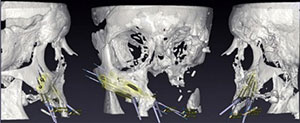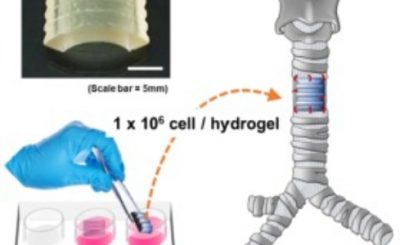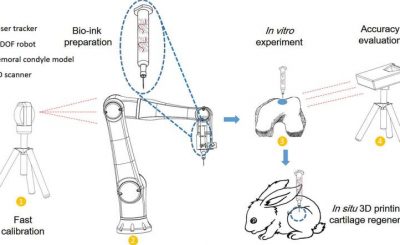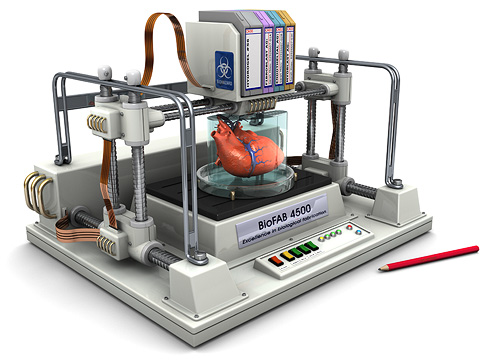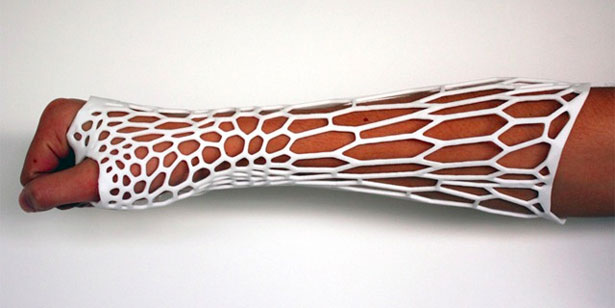Across the 3D printing hype that has inundated our global society, attention has been focused on the extremes, from the desktop machines that make the dream of manufacturing from home a reality to the large-scale structures formed by enormous concrete printing systems. In the press, medical stories, in particular, are attached to headlines that say “3D printing saves lives” and elaborate facial reconstruction operations pour through social media as though a dam broke somewhere. Lost in the flood are the subtler stories that don’t hyperbolically champion the technology as a means of instantly revolutionizing our world, but rather as a tool to advance our civilization over time.
At Arizona State University (ASU), bioengineering researcher Dr. David Frakes isn’t 3D printing liver tissue. Instead, he and his team at the school’s 

In the case of Dr. Frakes and his lab, the Solidscape printer was necessary to make a completely clear polyurethane block for their research. After first using Mimics to convert MRI (and other scan) data of a patient’s aneurysm into a wax 3D print with the Solidscape machine, the lab was able to cast a pristine metal core. The core, made from a low-temperature Lead-Tin-Bismuth alloy, was subsequently placed in an acrylic mold box and surrounded by the optically-clear polyurethane. Finally, the core was removed through pressure, heat, and an acid solution.

Once all of the hard manual labor was completed, the real work of dynamic testing was begun. Using the mechanical couplers attached at either end of the polyurethane block, the lab pumped particulate fluid through the channels in the block and sliced the flow patterns with a green light laser. By inserting various coils into the block to fill the aneurysm model, the team was further able to determine how a specifically designed coil might affect the overall blood flow and confirm their virtual simulations. For instance, coils with varying diameters or made from special materials could lead to better blockage of blood to the aneurysm.

Speaking with Solidscape’s Vice President of Marketing & Communications, Bill Dahl, I learned that ASU’s research could, one day, lay the foundation for patient-specific medical devices. With 3D data of a patient’s brain, and the specific region containing an aneurysm, doctors could better determine the proper coil design for the patient. At the same time, these models might also be used to prepare for surgical planning and guiding the device to the aneurysm site.

Experimentally verified computer simulations accurately predict blood flow in response to coil devices. Computer simulation on the left versus the experimental simulation on the right. From the Image Processing Applications Lab website: “Top: Untreated model, Middle: Low coil packing density, Bottom: High coil packing density.”
Like many of the proposed patient-specific medical applications of 3D printing technology, this one may not be implemented this week, but the use of 3D printing in this specific example reveals some powerful potential for the technology that may not place it at the forefront of the story. In some ways, this story reflects Solidscape’s approach to marketing themselves as a whole. As Bill told me, they prefer to let their customers tales speak for themselves. For that reason, Bill and Dr. Frakes have been doing some of their talks at expos and conventions together, with Bill presenting the machine and the doctor taking over with its uses in his research. It’s also why Solidscape has so many interviews with customers on their YouTube channel. Bill tells me that they may use a similar approach with their customer Jenny Wu, who utilized wax 3D printing to cast a truly exquisite metal ring.
Dr. Frakes and his team are continuing to take advantage of the company’s technology as they pursue future medical research and, as they do, we’ll keep you updated on their innovative uses of 3D printing. Until then, you can learn more about this most recent work from the video below. And, you can get more info about Solidscape at their website. Or, if you’re planning to attend, you can also catch Solidscape at the upcoming TCT Show, in which the company will be showing off their latest wax 3D printer, the Solidscape® MAX2.
